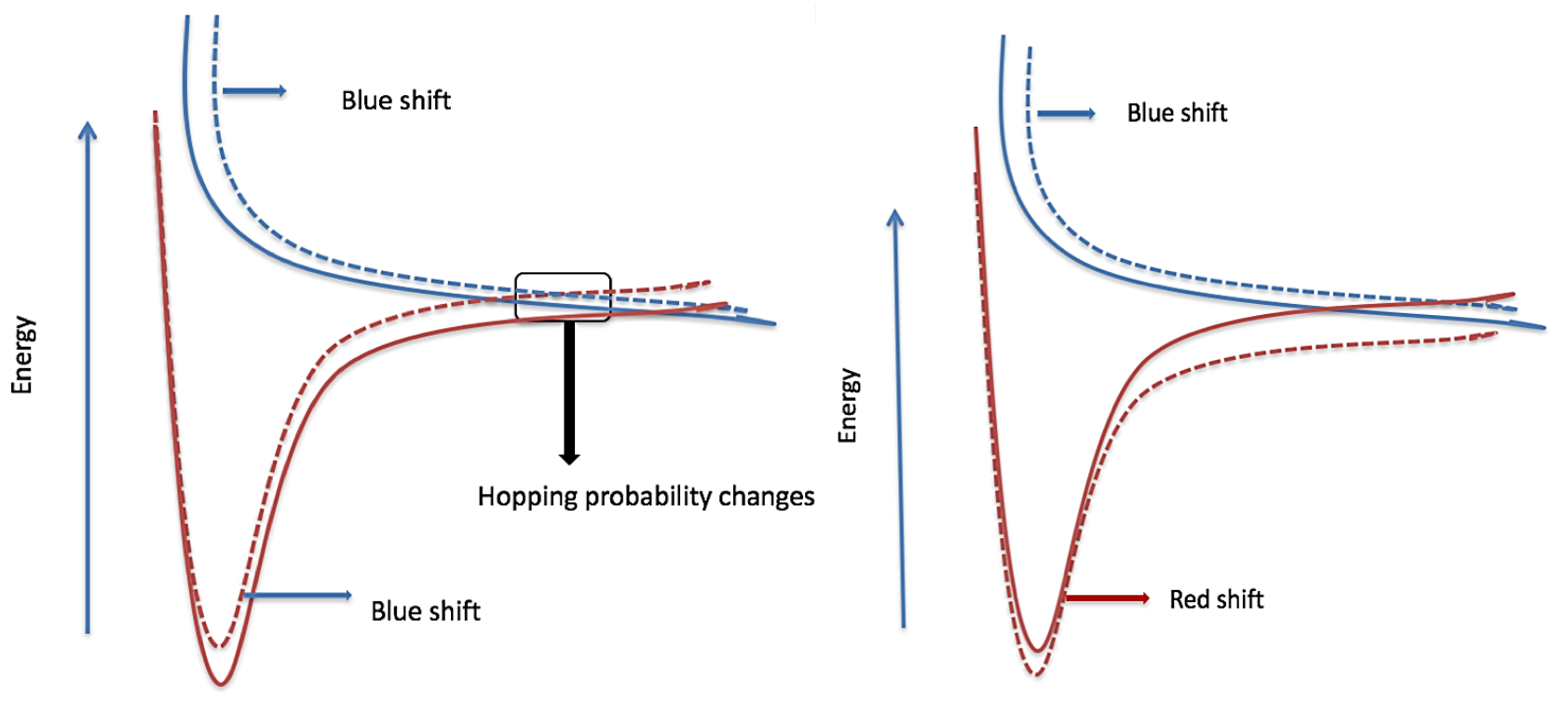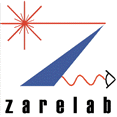Photon Catalysis of Gas and Condensed-Phase Reactions
Jana Meiser, Kallie Hilsabeck
The outcomes of a collision between two molecular species are solely determined by directions and energetics of the system – i.e., the translational, vibrational, and rotational energies of the reagents, and the interacting forces among them. In previous years, research in the Zare lab has focused on bimolecular collisions (i.e. H+H2), which have provided great model systems for investigating reactions on a single-collision scale.1-3 In addition to understanding these reactions, chemists seek to develop the skills to control their outcomes. For example, radiation has long been used to control chemical reactions through the resonant excitation of vibrations and excited electronic states. Much less well studied is the use of nonresonant radiation, supplied by an infrared laser pulse, which through its electric field can influence the course of a collision. This can occur by aligning the reactants parallel to the electric field or by inducing a Stark shift directly on the potential energy surfaces (Figure 1) or both.

Figure 1. Visual representation of second-order Stark shift on potential energy curves.
In both alignment and Stark shift, the photons do interact with the molecular system through its polarizability but are not created or destroyed. It is this process of photon catalysis that we are currently investigating in our subgroup. Our study differs from what has been done previously4-5 in that nanosecond infrared pulses, much longer than the timescale of the reaction, are used to supply the strong electric field. This presents an opportunity to determine the more general effect a nonresonant electric field has on modifying total reaction yields and is also more conducive to the extension of the effect to bimolecular reactions.
In the first of two major objectives, the effect of a nonresonant laser field on photodissociation of diatomics (e.g. deuterium iodide) and “complex” molecules (e.g. phenol), is being explored and further extended to bimolecular inelastic and reactive collisions. To fulfill the second objective, a nonresonant infrared laser field will be applied to condensed-phase systems that are transparent to the incident radiation. 1. Gao, H.; Sneha, M.; Bouakline, F.; Althorpe, S. C.; Zare, R. N., Differential Cross Sections for the H+ D2→ HD (v′= 3, j′= 4–10)+ D Reaction above the Conical Intersection. The Journal of Physical Chemistry A 2015, 119 (50), 12036-12042. 2. Jambrina, P. G.; Herráez-Aguilar, D.; Aoiz, F. J.; Sneha, M.; Jankunas, J.; Zare, R. N., Quantum interference between H+ D2 quasiclassical reaction mechanisms. Nat. Chem. 2015, 7 (8), 661-667. 3. Sneha, M.; Gao, H.; Zare, R. N.; Jambrina, P.; Menéndez, M.; Aoiz, F., Multiple scattering mechanisms causing interference effects in the differential cross sections of H+ D2→ HD (v′= 4, j′)+ D at 3.26 eV collision energy. The Journal of chemical physics 2016, 145 (2), 024308. 4. Sussman, B. J.; Townsend, D.; Ivanov, M. Y.; Stolow, A., Dynamic stark control of photochemical processes. Science 2006, 314 (5797), 278-281. 5. Corrales, M.; González-Vázquez, J.; Balerdi, G.; Solá, I.; De Nalda, R.; Bañares, L., Control of ultrafast molecular photodissociation by laser-field-induced potentials. Nat. Chem. 2014, 6 (9), 785-790.
